This article contains information about the teams participating in the 2022-23 season of the Premier League and their home grounds.
Arsenal FC
- Stadium name: Emirates Stadium (“Arsenal Stadium” during European matches)
- Officially opened in: July 2006
- Official capacity: 60,704
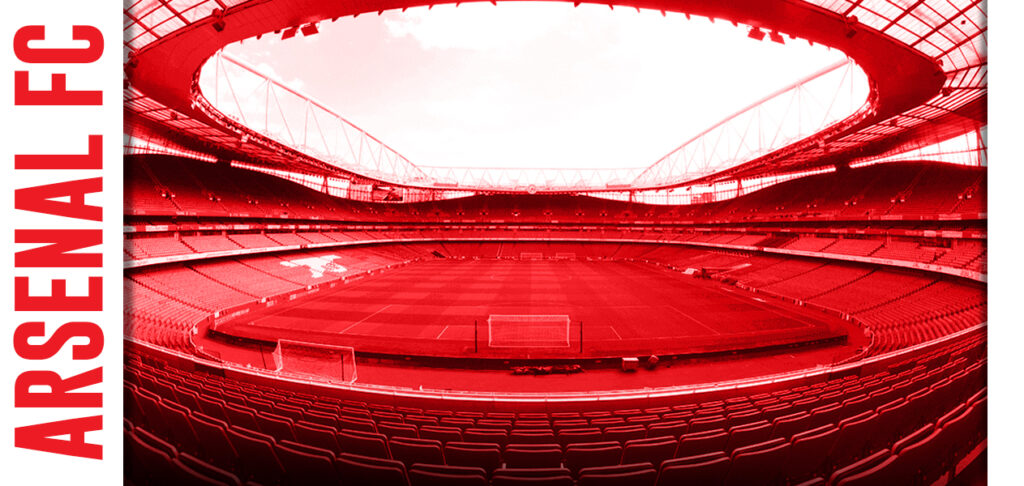
It wasn’t easy for the Arsenal family to leave their beloved Highbury behind, but to do so was deemed inevitable by the club. The 1989 Football Spectators Act and the Hillsborough Stadium Disaster Inquiry report of January 1990 mandated clubs of the top two professional football tiers in England to remove standing areas from their stadiums and make them all-seated. The subsequent renovation costs and reduced stadium capacity impacted Arsenal financially, so after years of contemplation, and facing backlash over the prospect of having to dislodge nearby houses in order to expand Highbury, the powers that were at the club decided to look for pastures anew.
After an unsuccessful attempt to purchase Wembley Stadium in 1998, Arsenal ultimately submitted a formal planning application to build a 60,000-seater stadium in Ashburton Grove in November 2000. Funding for the project was officially secured by February 2004, and later that year UAE flag carrier Emirates swooped in to buy the naming rights for the stadium — a deal that stands to this day.
Construction of the stadium reportedly cost £390 million, and on July 22, 2006, it was officially opened by Prince Philip, the then Duke of Edinburgh. The financial gymnastics Arsenal had to pull to make their new stadium happen would see them hamstrung financially over the next decade.
Aston Villa FC
- Stadium name: Villa Park
- Officially opened in: 1897
- Official capacity: 42,657
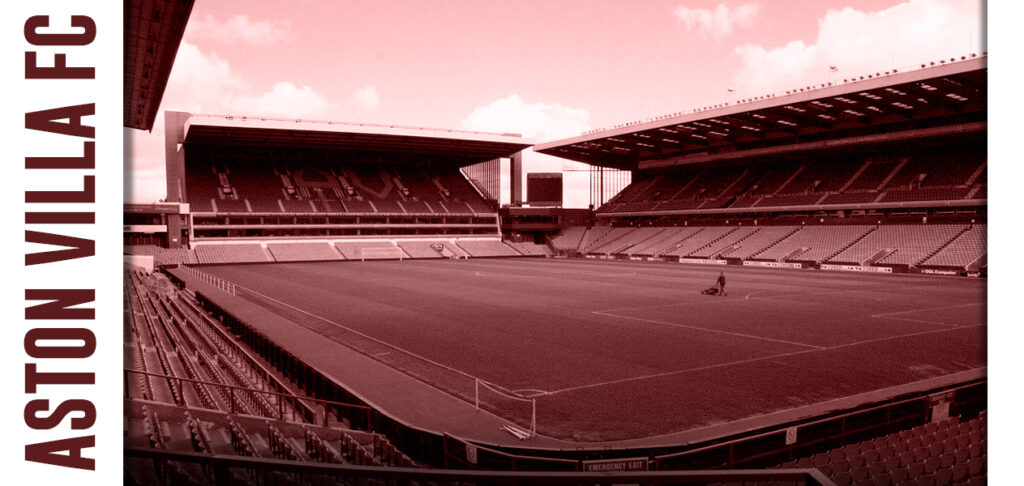
Despite being the Villains’ home turf for over 125 years, Villa Park is the third home stadium in the club’s history. For two years after they were founded in 1874, Aston Villa played at Aston Park before moving to Wellington Road in Perry Barr, Birmingham. By the 1890s, Wellington Road was deemed inadequate, and so talks began to move the club to the Aston Lower Grounds, which would later be renamed to Villa Park.
Villa Park was officially opened in 1897. Its first-time construction reportedly cost £16,733. Since then, multiple renovations have been carried out at the venue to modernise it. The latest Villa Park renovation plans, which would see—among other things—the stadium’s capacity increase from 42,682 to 50,065, were approved by Birmingham City Council in December 2022.
AFC Bournemouth
- Stadium name: Vitality Stadium (also known as “Dean Court”)
- Officially opened in: 1910
- Official capacity: 11,307
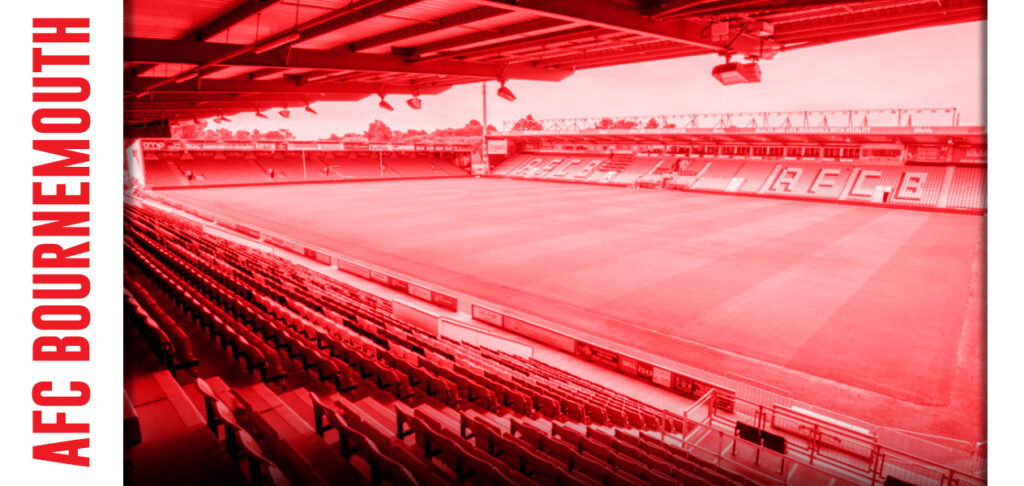
The Vitality may be the smallest ground in the Premier League, but it’s not one devoid of history.
Founded as Boscombe Football Club in 1899, the club initially played their games on a pitch in Castlemain Avenue, Pokesdown, before moving to a pitch in Kings Park in the Bournemouth suburb of Boscombe. It is near Kings Park that the club were provided land by local businessman JE Cooper-Dean to build their new stadium. The club wouldn’t be called “AFC Bournemouth” until 1971, but regardless of their guise, Dean Court has been their home since its official opening in 1910.
A complete rebuild of the stadium was completed in 2001, at which point the club also started handing out naming rights for the stadium to third parties. Dean Court’s first-ever named sponsorship agreement saw it renamed to “Fitness First Stadium”. In July 2011, the Seward Motor Group acquired the naming rights, renaming the stadium to “Seward Stadium”. Less than a year later, however, Seward went into administration, which saw the club renamed to “Goldsands Stadium”. Finally, in July 2015, British private medical insurance company Vitality acquired the Dean Court naming rights — an agreement that stands to this day.
In December 2016, the club confirmed that they would look to build a new home ground due to ownership issues concerning Dean Court. In July 2017, it was confirmed that the new AFC Bournemouth home ground would be built in Kings Park itself, near Dean Court.
Brighton & Hove Albion FC
- Stadium name: American Express Community Stadium or “Amex” (also known as “Falmer Stadium”)
- Officially opened in: July 2011
- Official capacity: 31,800
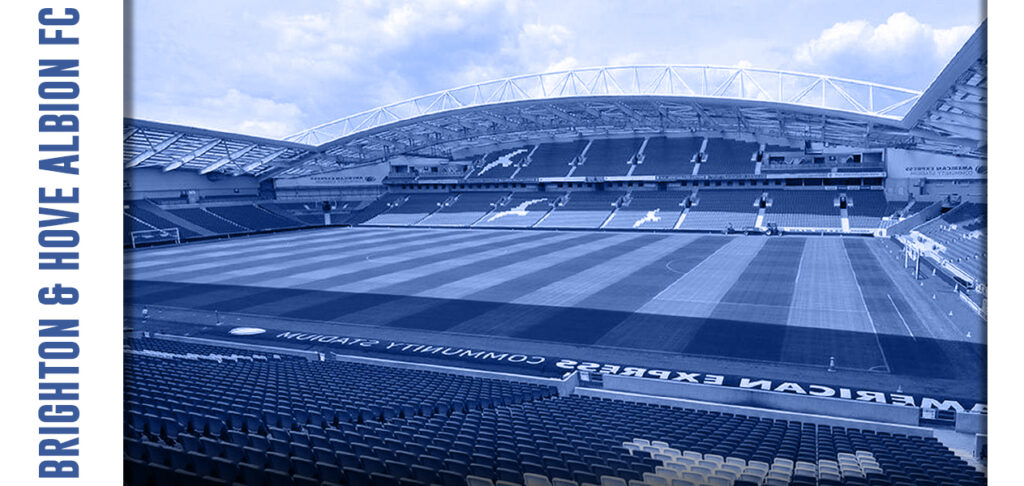
For 95 years after their founding in 1901, Brighton & Hove Albion played at the Goldstone Ground, which was ultimately closed and demolished in 1997. Between 1997 and 1999, the club shared Kent-situated Priestfield Stadium with its original owners, Gillingham Football Club, before moving to Withdean Stadium—a stadium known at the time mostly for athletics and as a zoo—in Brighton on rent.
The financial challenges brought upon by the sharing of Priestfield, the renting of Withdean, and the general cost of planning for a new stadium would see Brighton & Hove Albion operate without a home to call their own for 14 years. The club would go on to play their final home game at the Withdean Stadium on April 30, 2011, against Huddersfield Town.
Plans for a new Brighton & Hove Albion stadium to be built in the Lewes District village of Falmer in East Sussex were finally approved in October 2005. Construction began in December 2007 and was completed in May 2011, just in time for the club to start the 2011-12 season at their new home.
Even before the new ground was officially opened, multinational financial services corporation American Express (Amex) had swooped in to purchase the naming rights for the stadium in June 2010. This marked the beginning of what would turn out to be a fruitful partnership between not just Amex and the club, but also Amex and the city of Brighton and Hove. 2013 saw Amex acquire front-of-shirt sponsorship rights for the club. The company also established its UK headquarters in Brighton and is now one of the largest private sector employers in the region. Amex and Brighton & Hove Albion last extended their partnership in August 2019 as part of a 12-year extension agreement in an enhanced deal reportedly worth north of £100 million.
Officially called the American Express Community Stadium but colloquially known as “the Amex”, the new Brighton & Hove Albion home ground officially opened on July 20, 2011, with a friendly match played between the home team and Tottenham Hotspur. Originally built keeping in mind its expandability, the Amex has undergone several upgrades in its short life. Initially opened with an official capacity of 22,374, the Amex was expanded to a 27,250-seater ahead of the 2012-13 season and then to a 27,750-seater in December 2012, reaching 30,750 by May 2013. Its capacity was again increased to 31,800 in 2021, with work already underway to take that number up to 32,500.
Brentford FC
- Stadium name: Gtech Community Stadium (originally called “Brentford Community Stadium” )
- Officially opened in: September 2020
- Official capacity: 17,250
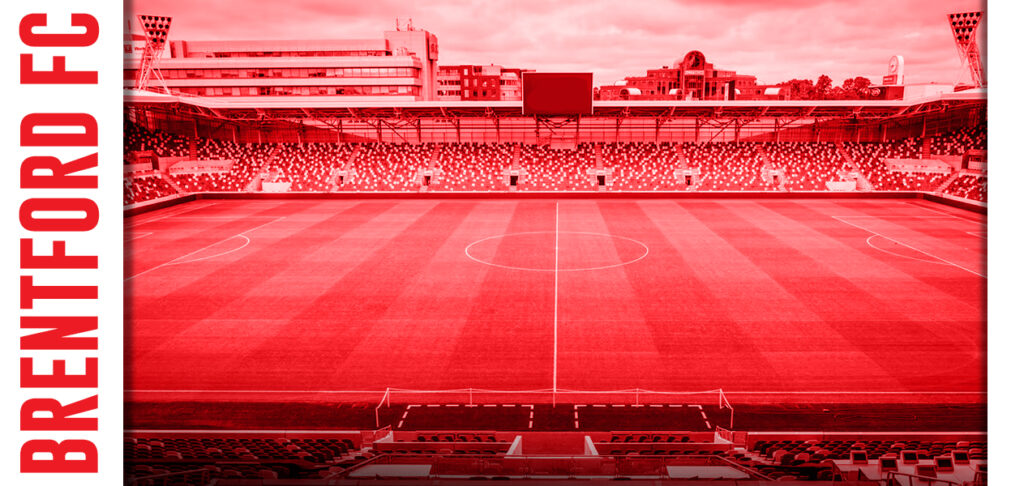
For the first 15 years after their founding in 1889, Brentford FC would move around a fair few times—Clifden Road (1889–91), Benn’s Field (1891–95), Shotter’s Field (1895–98), Cross Roads (1898–00) and York Road (1900–04)—before settling at Griffin Park. Opened officially in September 1904, this ground would go on to serve as the Brentford FC home until August 2020.
Decades before they moved on from Griffin Park, plans were already underway to move Brentford FC into a new stadium, though logistical rigmaroles would go on to substantially delay things. Ultimately, a 7.6-acre land in Lionel Road was chosen to be the site of the new Brentford FC stadium in June 2012. Work on the new site began officially in March 2017 and was completed in August 2020, just in time for the club to move in ahead of the 2020-21 season.
Originally christened as “Brentford Community Stadium”, the stadium had its name changed to “Gtech Community Stadium” in July 2022, when Worcester-based British home and lifestyle products brand Gtech signed a ten-year stadium naming rights agreement with the club.
Chelsea FC
- Stadium name: Stamford Bridge
- Officially opened in: April 1877
- Capacity: 40,343
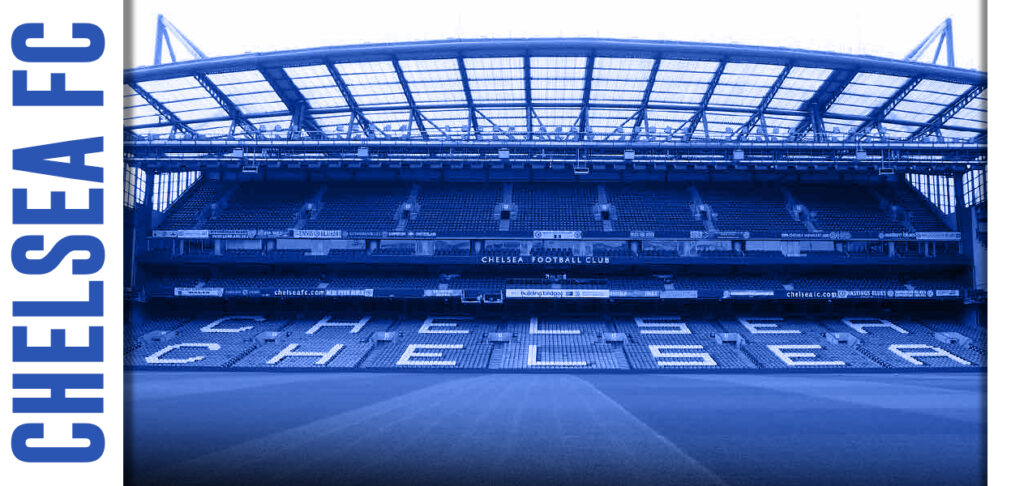
Not only is Stamford Bridge older than Chelsea Football Club, in this particular case the club came into being for Stamford Bridge to be able to host a football team of its own.
Officially opened in 1877, Stamford Bridge was exclusive to track and field club London Athletics Club until 1904, when English businessman Gus Mears bought the stadium with the intention of using it as a football ground. An offer was made to lease the ground to the borough’s eponymous club, Fulham FC, but after that was turned down, Mears decided to found his own club, with the Fulham-adjacent London borough of Chelsea serving as inspiration for this new club’s name. Hence, Chelsea Football Club came into being in March 1905, and they have called Stamford Bridge their home ever since.
Stamford Bridge once had an official capacity north of 100,000, but that number kept reducing significantly as the last century progressed and health and safety regulations evolved. Then, when the 1989 Football Spectators Act and the Hillsborough Stadium Disaster Inquiry report of January 1990 came through and brought with them mandates for clubs of the top two professional football tiers in England to remove standing areas from their stadiums and make them all-seated, Chelsea FC submitted a planning application to rebuild Stamford Bridge into a 34,000-seater stadium, which was given approval in July 1990.
Interestingly, Stamford Bridge and its assets are owned by Chelsea Pitch Owners — a non-profit organisation created solely for the purpose of preventing any outside party from acquiring any part of the stadium, including its naming rights.
Crystal Palace FC
- Stadium name: Selhurst Park
- Officially opened in: August 1924
- Capacity: 25,486
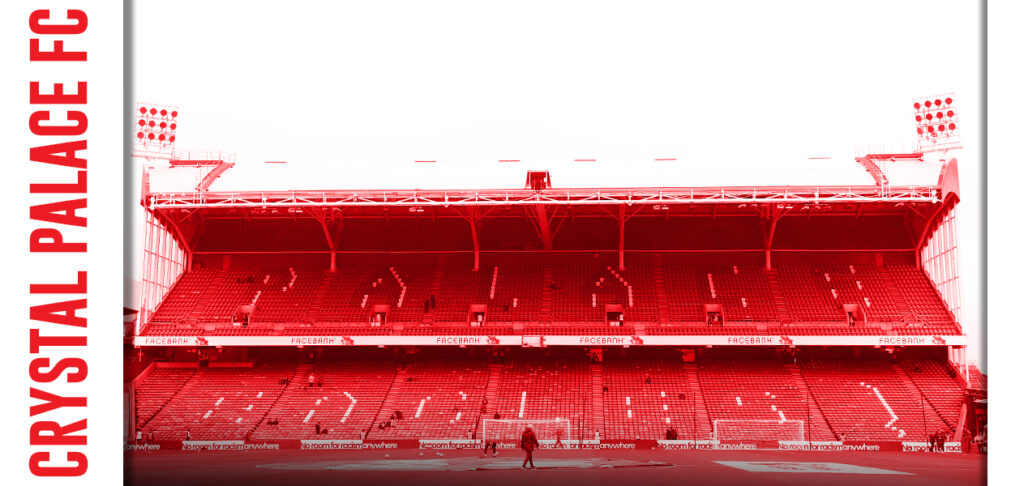
Despite having been officially founded in September 1905, Crystal Palace FC’s origins go back to the 1850s. In 1854, the Crystal Palace — an exhibition building originally built for the Great Exhibition of 1851 — was moved from Hyde Park to Sydenham Hill in London. This area would later be renamed to Crystal Palace.
Owner of the Crystal Palace exhibition building, the Crystal Palace Company, founded the Crystal Palace Club in 1857. Initially focused on cricket, the club eventually turned to amateur football and went on to become one of the founding members of the Football Association (FA) in 1863. Historical records have Crystal Palace playing football regularly from this point to 1875, after which their name disappears for nearly three decades.
The original home ground of Crystal Palace was the National Sports Centre housed at Sydenham Hill. In 1895, this stadium was decided upon by the FA to also serve as the venue for the FA Cup Final.
The Crystal Palace Company, keen on finding new revenue sources and maximising the potential of the Crystal Palace area, officially founded Crystal Palace Football Club on September 10, 1905. The club played their home matches at the National Sports Centre until the outbreak of the First World War, at which point the Crystal Palace and its grounds were seized by the army. The club temporarily moved to the Herne Hill Velodrome, which at the time was also home to West Norwood Football Club.
In 1917, the club moved to a ground known commonly as “the Nest”. This was, officially, Croydon Common Athletic Ground, home to Croydon Common Football Club, who went under before Palace moved in. In 1919, the club purchased the land upon which Selhurst Park would be built, completed and ready for use by August 1924, just in time for the 1924–25 season.
Selhurst Park’s official attendance record was set in 1979 — 51,482. However, after several redevelopments, especially the ones carried out after the 1989 Football Spectators Act and the Hillsborough Stadium Disaster Inquiry report of January 1990, capped its capacity at 25,486. Another revamp of the ground is imminent, with the club having announced plans for a £100m worth of development in 2018.
Interestingly, Selhurst Park also features in Apple TV+ show Ted Lasso as “Nelson Road” — the official home ground of fictional in-show football club AFC Richmond.
Everton FC
- Stadium name: Goodison Park
- Officially opened in: August 1892
- Capacity: 39,414
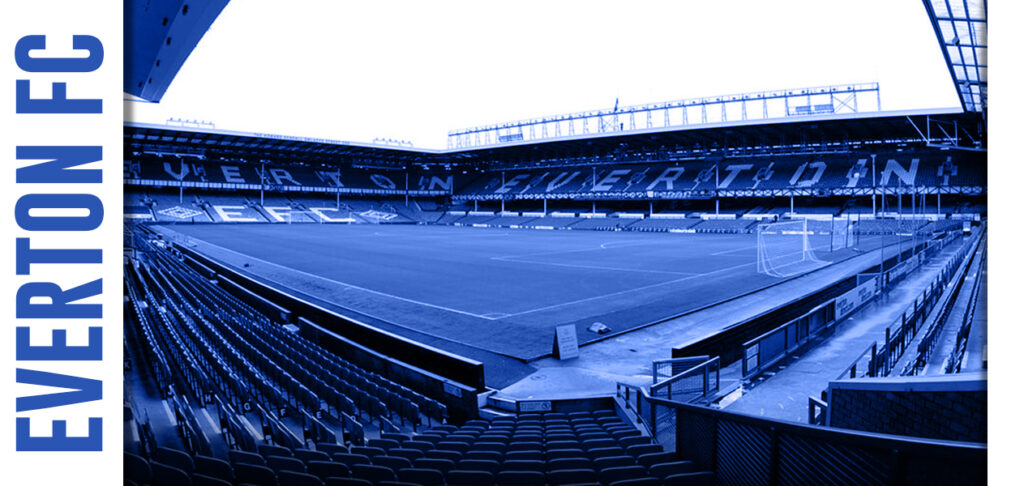
In the early days after their founding in 1878, Everton FC played their home games in the southeast corner of a 100-acre park in Liverpool called Stanley Park. In 1882, the club were donated some land at Priory Road, which became their home for the next two years.
In 1884, the club started playing their home games at a certain ground called Anfield. Everton rented Anfield from a man called John Orrell, who was a friend of influential club member John Houlding. In 1885, Houlding bought the Anield land from Orrell, becoming the de facto landlord of Everton FC in the process. Over the next years, Houlding would go on to increase the rent, ultimately reaching a point in 1892 at which the club would deem the rent amount unacceptable. The rent issue would go on to create major tensions within the club members’ committee regarding the club’s operations and maintenance.
In 1892, Houlding proposed turning the club into a “limited company”, which would then buy from him Anfield outright. This motion was ultimately rejected by the club members’ committee, who acquired the lease for Mere Green Field in Walton, Lancashire, which would serve as the site for Goodison Park. The club would go on to purchase the stadium a few years later.
Left with a vacant stadium, Houlding would go on to found his own Liverpudlian club to rival Everton FC — a certain Liverpool Football Club.
Having called it their home for a little over 130 years, Everton FC are already in the process of saying goodbye to Goodison. In January 2017 the club announced that Bramley-Moore Dock—located in Vauxhall, Liverpool—would serve as the site of their new stadium. Currently dubbed “Everton Stadium”, this new ground is expected to have an official capacity of 52,888, with potential for it to be upgraded to around 62,000. Currently under construction, this stadium is expected to be opened officially in 2024.
Fulham FC
- Stadium name: Craven Cottage
- Officially opened in: 1780
- Capacity: 22,384
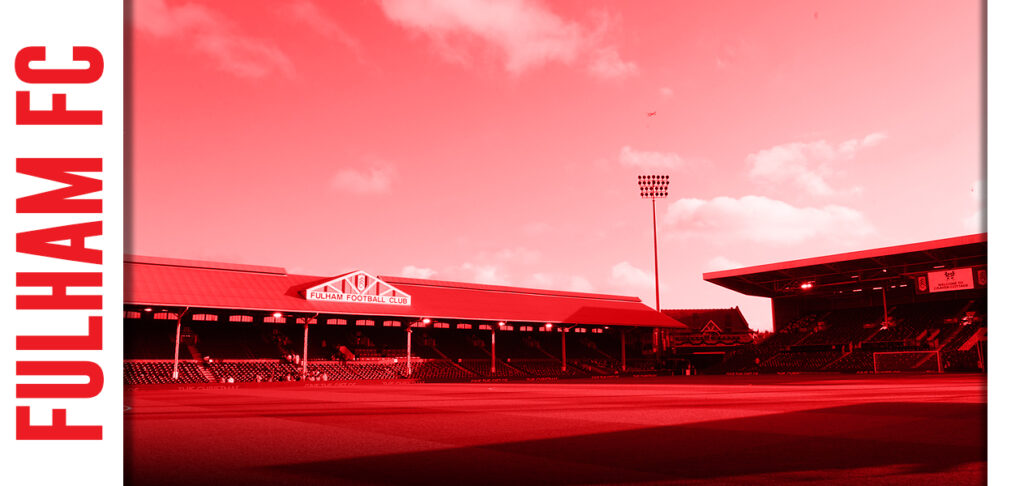
The original Craven Cottage not only predates Fulham FC but also the very foundations of professional association football we know today.
Originally built as a royal hunting lodge in 1780, Craven Cottage was destroyed in a fire in 1888. It was rebuilt as a football stadium in 1896, at which point Fulham FC moved into the ground. By this point, the club had already had multiple grounds they had called their home since their founding in 1879 — The Mud Pond, Star Road, Fulham (1879–83); Lillie Road, Fulham (1883–86); Ranelagh House, Fulham (1886–88); Barn Elms Playing Fields, Barnes (1888–89); Parsons Green, Fulham and Roskell’s Fields (1889–91); Half Moon, Putney (1891–95); Captain James Field, Halford Road, West Brompton (1895–96).
Fulham FC remained at Craven Cottage till 2002, when they temporarily moved away to Loftus Road, home of their rivals Queens Park Rangers FC, in order for the Cottage to be refurbished and meet the safety standards introduced by the 1989 Football Spectators Act and the Hillsborough Stadium Disaster Inquiry report of January 1990. The ground was revamped just in time for Fulham to move back ahead of the 2004-05 season.
Leeds United FC
- Stadium name: Elland Road
- Officially opened in: 1897
- Capacity: 37,792
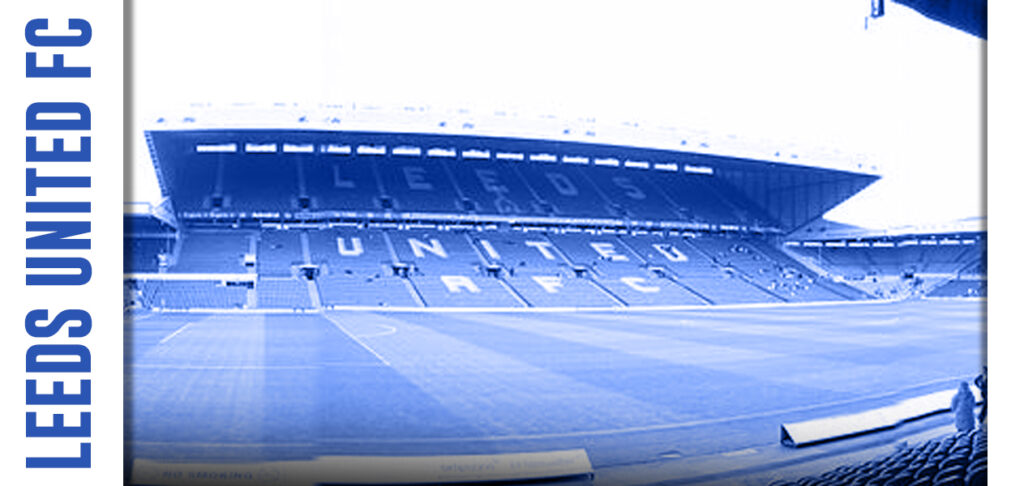
Officially opened in 1897, Elland Road was initially home to a rugby club called Holbeck. During the 1902-03 season, the ground was shared by Holbeck and a football club named Leeds Woodville. In 1904, Holbeck were dissolved, and in August of that year a football club called Leeds City were found, who agreed to rent Elland Road as their home.
By 1919, Leeds City were disbanded and Leeds United were founded, who immediately moved into Elland Road alongside another football club called Yorkshire Amateurs, who sold the ground to Leeds United by next year.
In 2004, amid financial difficulties, Leeds United sold away Elland Road with a 25-year lease and buy-back clause. They would go on to re-purchase the club in June 2017.
Leicester City FC
- Stadium name: King Power Stadium (“Leicester City Stadium” during European matches)
- Officially opened in: 2002
- Capacity: 32,262
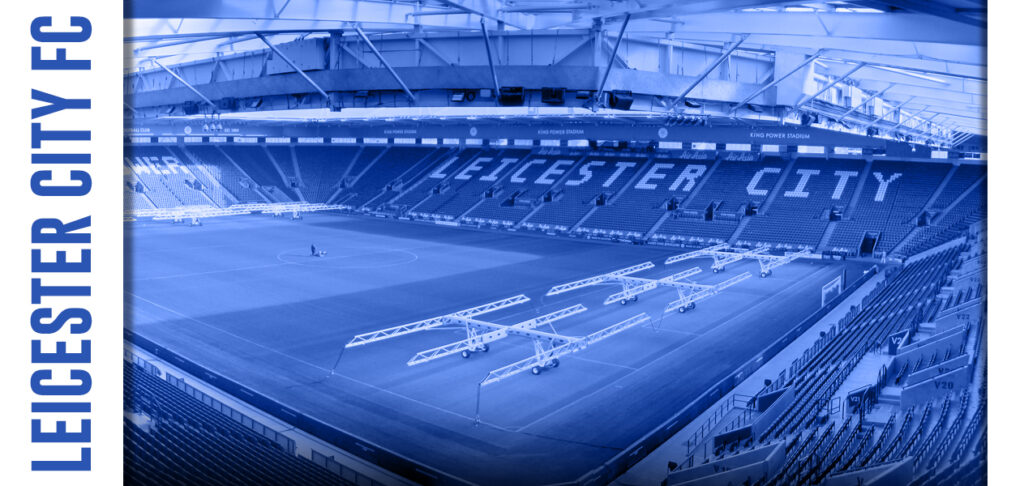
When they originally started out in 1884, Leicester City used to play in a field nearby Fosse Road and were known as Leicester Fosse (they wouldn’t be called “Leicester City” until 1919). From there, they moved to Victoria Park and later to Belgrave Road.
After they turned professional, Leicester City moved to Mill Lane. They would later go on to be evicted from there and move to Leicester’s County Cricket ground, Grace Road, before ultimately settling at Filbert Street in 1891, where they would remain for the next 111 years.
By 1998, Leicester City were looking at plans to move to a new stadium. In November 2000, plans were unveiled for a 32,000-seater at Freeman’s Wharf. This stadium—known as the Leicester City Stadium to this day during UEFA games—was completed in 2002, just in time for the 2002-03 season.
The new stadium was initially named the “Walkers Stadium” after the club agreed a deal with local potato chips company Walkers, which previously had also served as their teams’ principal shirt sponsor (1987–2001). In 2010, Thai travel retail group King Power became the new owner of Leicester City FC and eventually acquired the stadium naming rights in July 2011. The stadium has been known colloquially as “the King Power” since then.
Liverpool FC
- Stadium name: Anfield
- Officially opened in: 1884
- Capacity: 53,394
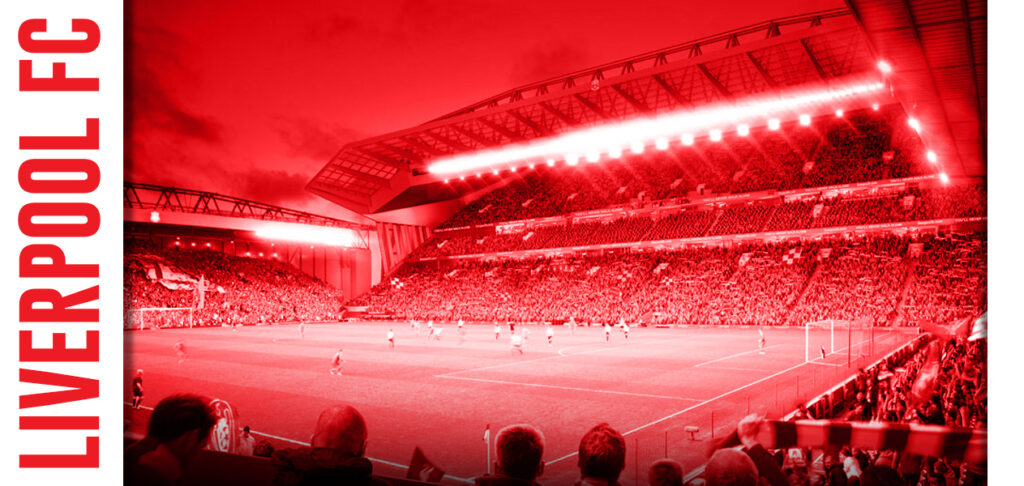
Today, it’s hard to imagine that Anfield, a ground so closely associated with Liverpool FC, was once home to their rivals, Everton FC, but that’s exactly the case here.
Officially opened in 1884, Anfield was owned by John Orrell, whose land it was built upon. It was initially rented out to Everton FC; one of their club members, John Houlding, was a friend of Orrell’s. In 1885, Houlding bought the Anield land from Orrell, becoming the de facto landlord of Everton FC in the process.
Thus began a long process of Houlding eventually falling out with the club. In 1892, Everton FC would move away from Anfield, leaving Houlding with a vacant stadium. To fill this vacancy, he founded his own club in early 1892, which at the time was called “Everton FC and Athletic Grounds Ltd”. The FA, however, refused to officially recognise another football club with the “Everton” name, so “Everton FC and Athletic Grounds Ltd” were renamed to “Liverpool FC” — a change that was formally recognised by the FA by June 1892.
The rest, as they say, is history.
Manchester City FC
- Stadium name: Etihad Stadium (“City of Manchester Stadium” during European matches)
- Officially opened in: July 2002
- Capacity: 53,000

Manchester City FC were originally founded by the members of St Mark’s Church of England in West Gorton, Manchester. Founded in 1880, they were known as St Mark’s or West Gorton until 1887, when they were renamed to “Ardwick AFC”, ultimately becoming Manchester City FC in April 1894.
When they started out, the club played on a pitch near St Mark’s Church itself, before signing a ground-share agreement with the Kirkmanshulme Cricket Club, which only lasted for about a year. After playing on three more bumpy pitches, a waste ground on Hyde Road in Ardwick was chosen as the site for the club’s own home stadium. Upon this site was built the Hyde Road stadium, taking its name from the site it was built upon, opened officially in September 1887.
Hyde Road remained Man City’s home for 36 years. Three years before the club would move out of it, the ground was severely damaged by a fire in 1920, completely losing its Main Stand. It was at this point that the club decided to look for a new home. There were even proposals at one point to share Old Trafford with their neighbours Manchester United, but the club ultimately chose to go for a new ground in Moss Side called Maine Road. Plans for this new ground were unveiled by May 1922, and a year later it was officially opened.
The City of Manchester Stadium was initially built by the Manchester City Council for the 2002 Commonwealth Games (CWG). When the 2002 CWG ended, after much deliberation, plans were made to redevelop the ground as a football stadium, with Man City having reached a 200-year lease agreement with the Manchester City Council for the stadium, which would be redeveloped by August 2003, just in time for Man City to move in ahead of the 2003-04 season.
Manchester City FC bear the cost of maintenance, repairs and upgrades made to the City of Manchester Stadium. In 2011, three years after the club were taken over by the Abu Dhabi United Group, the ground was renamed to the “Etihad Stadium” as part of a sponsorship agreement between Man City and UAE flag carrier Etihad Airways.
Manchester United FC
- Stadium name: Old Trafford
- Officially opened in: February 1910
- Capacity: 74,310
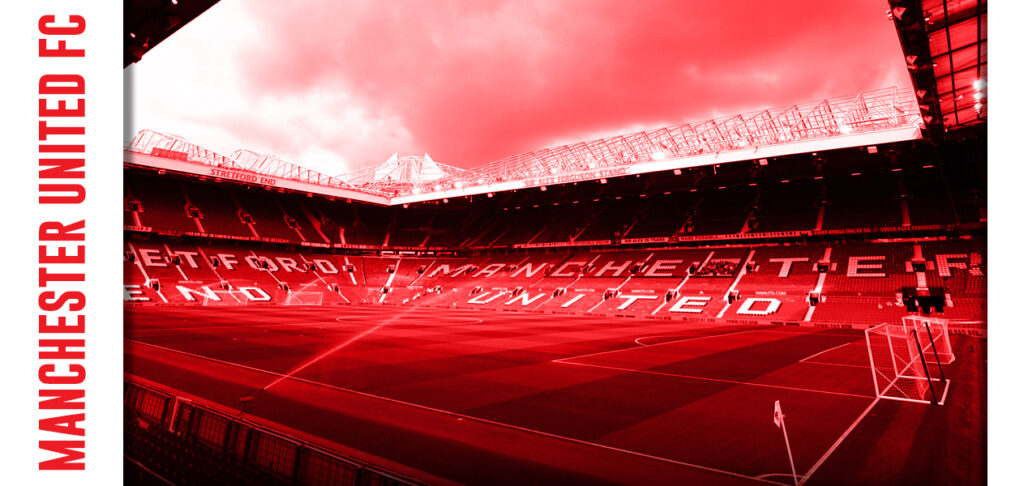
Man United were originally founded in 1878 as Newton Heath LYR (LYR stood for “Lancashire and Yorkshire Railway”) Football Club. Donning their original green-and-gold kits, the club kept this name until 1902, when mounting debts almost put them on the brink of dissolution. However, they were saved by donations from four local businessmen, who in turn were given charge of the club. Manchester United Football Club officially came into being on April 24, 1902.
Upon their founding, from 1878 to 1893, the club played their games on a football and cricket ground called North Road, which was located in Newton Heath itself. They did not own this ground, however; it was owned by Manchester Deans and Canons, who would evict them from North Road after 15 years.
After eviction, at-the-time club secretary AH Albut secured for the club a ground called Bank Street in Clayton. This is where the club would remain from 1893 until 1910.
In 1908, the club brought home their first league title. A year later, they’d secure an FA Cup as well. With Bank Street being considered increasingly restrictive by this point, a patch of land near the Bridgewater Canal in Old Trafford was chosen as the site for the club’s new ground. This stadium would go on to take the name of the area it would be built in. Old Trafford was officially opened in February 1910 and has remained the home of the Red Devils ever since.
Newcastle United FC
- Stadium name: St James’ Park
- Officially opened in: 1880
- Capacity: 52,305
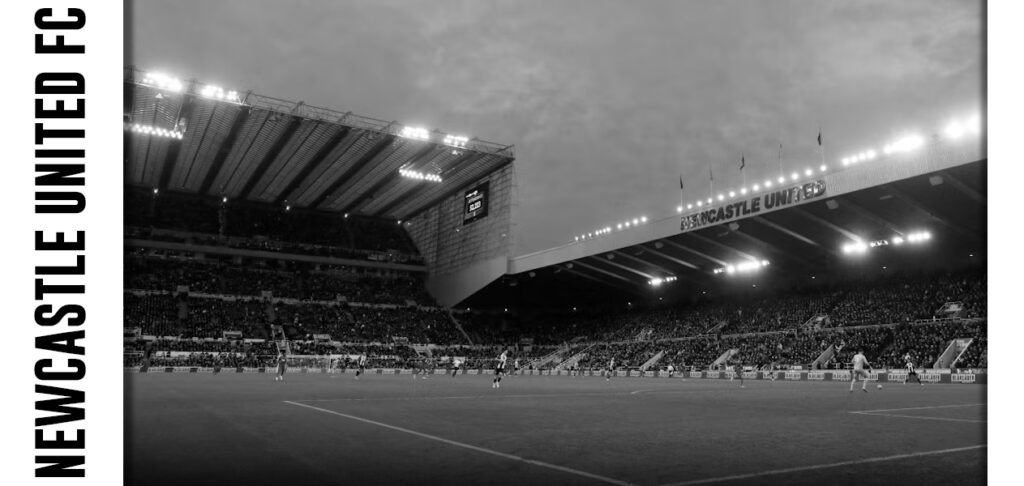
To understand the formation of Newcastle United FC, we need to go back to November 1881, when a Tyneside cricket club called the Stanley Cricket Club formed a football club. In October 1882, in order to reduce confusion and give them more recognition, this football club were renamed to Newcastle East End. That same year, in August, same-city West End Cricket Club founded their own football club called “Newcastle West End”.
Over the next few years, the East End and West End football clubs would go on to form a rivalry and become prominent teams from Tyneside. As fate would have it, however, East End’s fortunes would rise, while West End would slowly decline away into oblivion.
As former West End players and staff slowly became part of the East End setup, a sort of informal merger of the two clubs came about. The suffix “United” was chosen for the entity that came out of this period in order to celebrate the union of the two Tyneside clubs; Newcastle United was born on December 9, 1892.
The first football team to play at St James’ Park were Newcastle Rangers, who played there from 1880 to 1882. They returned for a while in 1884, before dissolving that same year. Newcastle West End took over from them and stayed there from 1886 until 1892, at which point they “merged” with Newcastle East End to form Newcastle United, who acquired the lease of the ground in May 1892. They’ve been there ever since.
Nottingham Forest FC
- Stadium name: City Ground
- Officially opened in: September 1898
- Capacity: 30,332
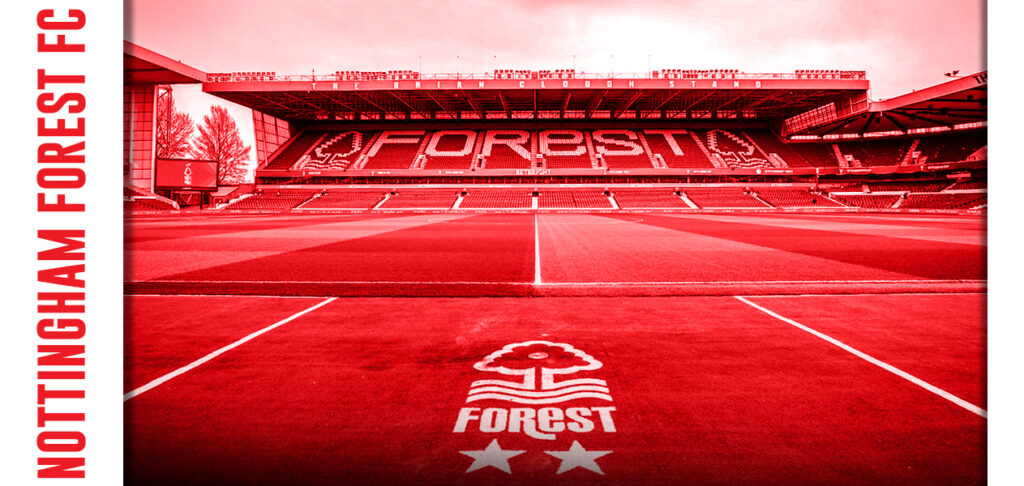
Regarded as the oldest league football club in the world, Nottingham Forest FC were formed in 1865, taking their name from the common area of the Forest Recreation Ground, where they played for the first 13 years of their existence. Since this was not technically their own ground, they could not charge admission fees to spectators and therefore could not participate in the FA Cup. This changed in 1879, when they moved to the Castle Ground in The Meadows. A year later they moved again, this time to Trent Bridge Cricket Ground, from where they would be evicted very abruptly in two years’ time only to be replaced by local rivals Notts County.
Forest’s next two home grounds were the Parkside Ground (1883–85) and the Gregory Ground (1885–90) — both in Lenton. During this period. The club received criticism and suffered from low attendances due to Lenton’s distance from the centre of Nottingham.
In 1890, Forest returned to The Meadows by moving to a ground called the Town Ground. This is where they would remain for the next eight years.
In 1897, Nottingham was granted city status. In recognition of the same, the Town Ground was renamed to the City Ground. Soon, however, the Nottingham City Council decided to evict Forest from this ground and redevelop the site for housing. The club were instead handed a lease to a site in West Bridgford, where the present-day City Ground would be opened in September 1898. Forest have stayed there ever since.
Southampton FC
- Stadium name: St Mary’s Stadium
- Officially opened in: August 2001
- Capacity: 32,383
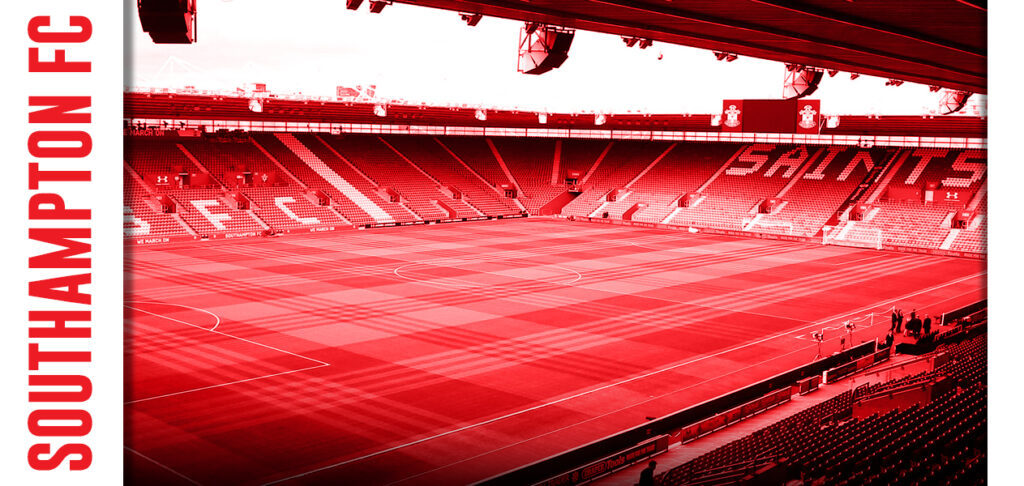
Southampton FC were founded in September 1885 by the St Mary’s Church Young Men’s Association, though that’s not the name they kicked things off with. The club started off as St Mary’s Church Young Men’s Association FC, before adopting the names St Mary’s FC (1887–94), Southampton St Mary’s (1894–97), and, ultimately, Southampton FC — a name they decided upon after becoming a limited company on the back of their 1896–97 Southern League title win.
Initially, the club played their matches in the communal place of Southampton Common. Being a common area, their matches played here would often be interrupted, so the venues Southampton County Cricket Ground (Northlands Road) and Antelope Cricket Ground (St Mary’s Road) were also used for the games deemed “important”.
After they became a limited company and renamed themselves to Southampton FC, the club chose for themselves a new location in Milton Road where they would go on to build The Dell (September 1898), which would remain their home until 2001.
When the 1990s brought stricter safety mandates for the professional clubs of top two tiers in the land, The Dell underwent several redevelopments. Ultimately, however, the club decided to move away from The Dell when the city council gave them an opportunity to build a new stadium at Britannia Road — roughly a kilometre away from St Mary’s Church.
Touted as a homecoming, Southampton FC moved to The Friend’s Provident St Mary’s Stadium in August 2001. Friends’ Provident Insurance held the stadium naming rights for the ground until 2006, after which, to this day, it’s colloquially known as “St Mary’s Stadium”.
Tottenham Hotspur FC
- Stadium name: Tottenham Hotspur Stadium
- Officially opened in: April 2019
- Capacity: 62,850
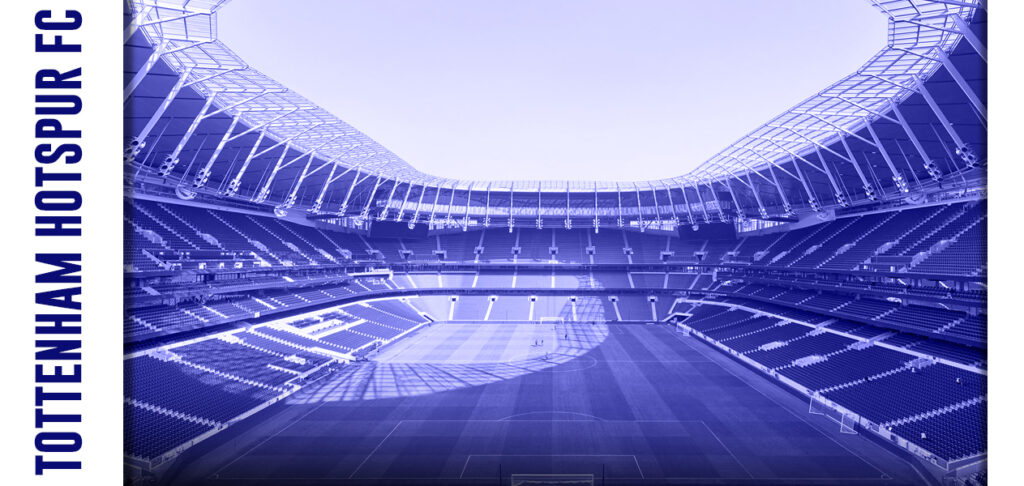
Founded as “Hotspur Football Club” in 1882 by Hotspur Cricket Club schoolboys to occupy their winter months, the club were renamed to “Tottenham Hotspur FC” by 1884. Initially, the club played their matches in the public Park Lane area of Tottenham Marshes, eventually moving to a pitch at Northumberland Park in 1888.
Towards the end of the 19th century, the club leased land from Charringtons behind the White Hart pub, east of the Tottenham High Road. Built upon this land would be White Hart Lane, opened officially in September 1899, and go on to serve as the Spurs home ground for almost 120 years.
By the late noughties, plans were already underway to relocate Tottenham Hotspur FC. However, several delays in not just the planning but also construction of the new stadium would keep Spurs at White Hart Lane until the end of the 2016–17 season.
The new stadium was decided to be built adjacent to White Hart Lane, ultimately requiring its demolition, so Spurs bid adieu to their old home in 2017 and temporarily moved to Wembley Stadium. The new Tottenham Hotspur Stadium would be completed by next year and open officially in April 2019 — midway through the 2019–20 season.
West Ham United FC
- Stadium name: London Stadium
- Officially opened in: May 2012
- Capacity: 62,500
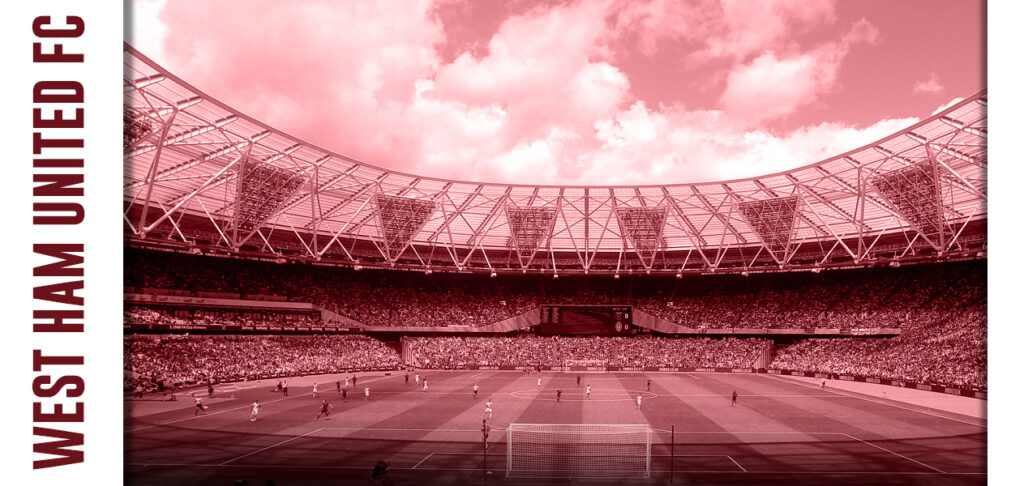
West Ham United FC were founded as Thames Ironworks FC in 1895 by the largest and last surviving Thames shipbuilder, Thames Ironworks and Shipbuilding Company. In half a decade’s time, disputes over club operations would see Thames Ironworks FC wound up and immediately relaunched as West Ham United FC at the turn of the 20th century.
Upon their founding, Thames Ironworks played at a ground called Hermit Road, located in Canning Town. They were evicted from here in October 1896, after which then-club chairman Arnold Hills temporarily rented a piece of land at Browning Road, East Ham, before selecting a piece of land in Canning Town for the next club home ground. Called The Memorial Grounds, this new stadium was opened in June 1897 and remained the club’s home until 1904, well after they had been rebranded as West Ham United.
West Ham moved to the Boleyn Ground in 1904 after absorbing that team that played there — Boleyn Castle. Also called Uptown Park, this ground would remain as the club’s home until the end of the 2015–16 season.
By the late noughties, talks were being held among the West Ham committee members to move the club to the London Olympic Stadium after the 2012 Summer Olympics. After much deliberation, the club were finally handed a 99-year lease of the stadium in March 2013. West Ham moved to London Stadium ahead of the 2016–17 season.
Wolverhampton Wanderers FC
- Stadium name: Molineux Stadium
- Officially opened in: 1889
- Capacity: 31,750
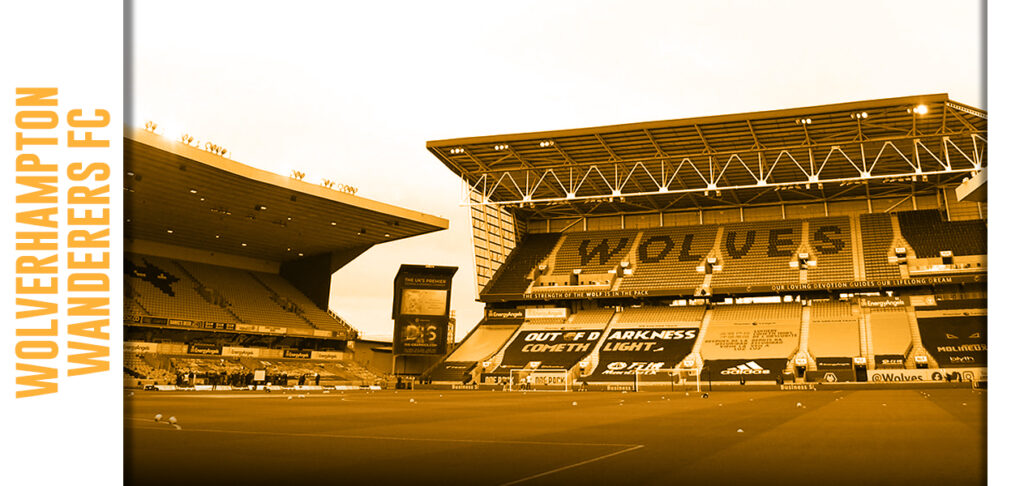
Wolverhampton Wanderers FC were founded as “St Luke’s FC” in 1877 by the pupils of Blakenhall-based St Luke’s Church school. Two years later, they merged with a local cricket and football club called “The Wanderers” and were renamed to “Wolverhampton Wanderers FC”.
Wolves initially played at a field on Goldthorn Hill in Blakenhall until 1879, when they moved to John Harper’s Field on Lower Villiers Street. They moved to Dudley Road in 1881, where they remained until 1889 before moving to Molineux Stadium.
The “Molineux” name comes from an 18th-century local merchant named Benjamin Molineux, who owned the land upon which the stadium would be built in 1889. In 1860, this land was purchased by a man called OE McGregor, who redeveloped the side for public use. In 1889, the Northampton Brewery bought the site and rented it to Wolves, who would go on to purchase the place outright in 1923.
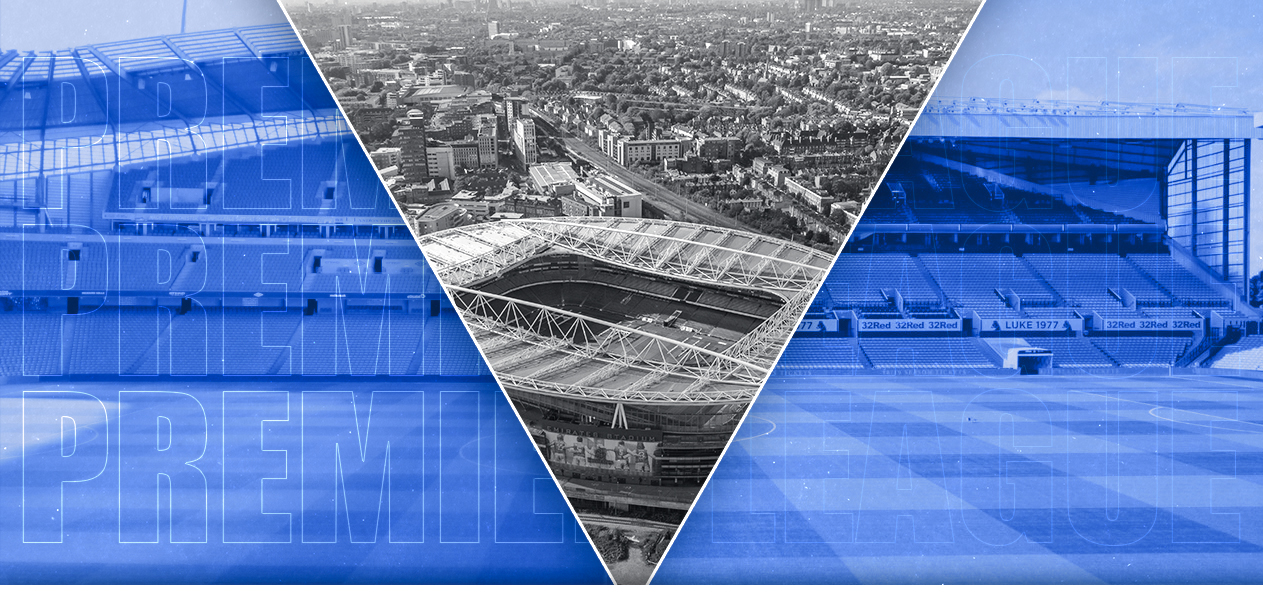



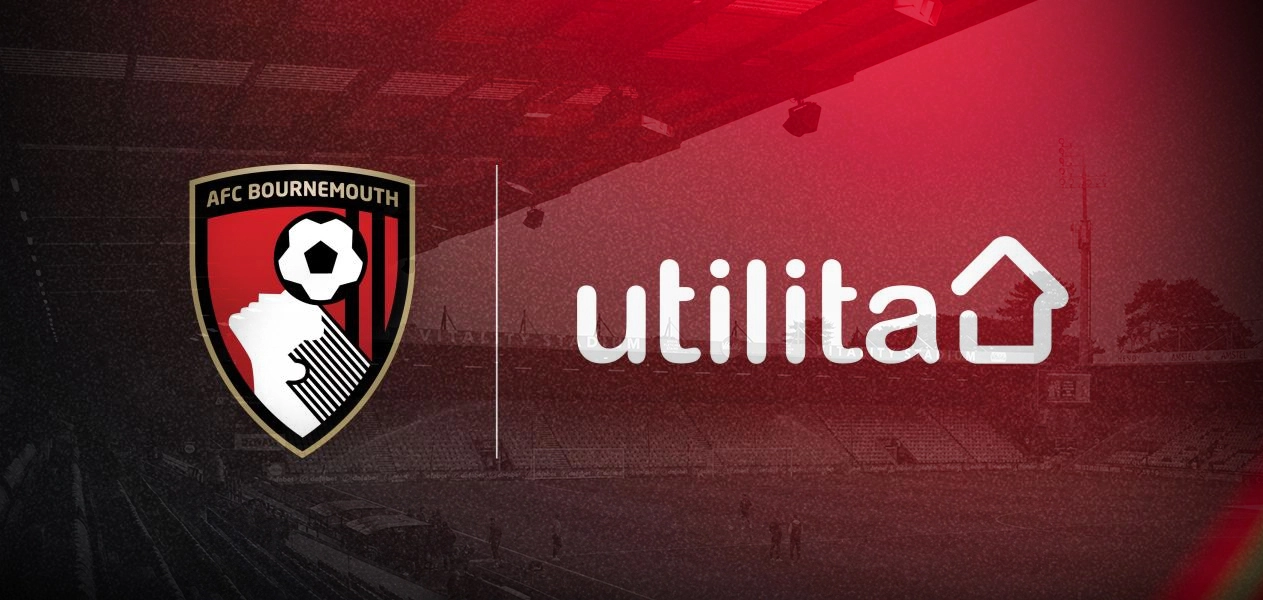

Leave a Reply